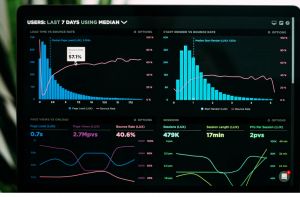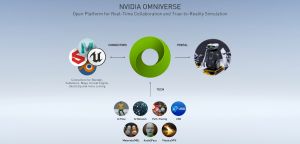Test Owner
German Freelance “Freiberufler” Visa
Freelance has become an ever-growing self-employment type, as it gives greater independence and less bureaucracy compared to the conventional type. Working as a freelancer, you are your own boss. There is great flexibility as of the days and hours of working. Moreover, you’re free to choose the clients and projects you want to work for. You have almost no working protocols to follow. You may not need an office to make your work happen.
Potentials needed to freelance:
- High sense of technical individuality.
- Innovative thinking.
- Particular education.
- Personal Qualities
- Responsiveness.
- Sense of self-motivation
- Sense of self-responsibility
How does freelancing work in Germany?
Before even thinking to perform a freelance job in Germany, you must understand the legal environment for self-employment here. This because the profession you’ve chosen to pursue, defines your eligibility for becoming a freelancer here. If the profession you’re thinking to exercise here is acknowledged as a liberal professions ‘Freibe Berufe’, you’ll be able to be a freelancer ‘Freiberufle’. Otherwise, if the job is listed as a commercial profession, you’ll only be able to be a businessperson ‘Gewerbe’.
Which are liberal professions in Germany?
The Income Tax Act of Germany (EStG) has a public listing of liberal and commercial professions here. Yet, the ultimate judgment on whether a profession qualifies as a liberal or as a commercial profession lies in the hands of the local tax office ‘Finanzamt’. Liberal ‘freelance’ professions in Germany, according to EStG §18, are self-employment jobs in the following fields:
- Healthcare
- Law
- Law and business counselling
- Scientific/technical
- Linguistic and information transmitting
Which are the legal requirements for freelancing in Germany?
As a freelancer in Germany, you’ll be excused from the business registration procedure and from getting the trade permit.
Registering with the Tax Office
Instead of the trade office, your freelance activity must be registered with the tax office. The tax office will be the authority to issue the tax number and to collect taxes from you, based on your freelance activity. Registering your business and submitting your tax reports to the Finanzamt can be daunting. As a freelancer, you have other concerns that you need to deal with and an unfamiliar tax system may cause you more to concern. That’s why it is quite a relief to know that you can let tax experts handle all this paperwork for you. Professional tax consultants at Sorted can assist you with preparing all your tax reports, creating invoices and submitting them directly to the tax office.
Why prepare and submit your tax reports as a freelancer with help from certified tax consultants?
- Sorted is a leading Germany-based company with a strong backing of serious investors.
- They cover the entire tax needs for the vast majority of the freelancers and self-employed professionals in Germany.
- Sorted supports you if you have domestic clients or even outside of Germany.
- With Sorted, you register as a freelancer, do your bookkeeping and submit yearly tax reports for free until your revenue meets a certain amount or obtain clients in the EU.
- You can submit your tax reports electronically to the Finanzamt through Sorted. Sorted is connected directly to the Finanzamt through their official software provider, ELSTER.
- For some liberal professions, you must get membership into the respective chambers and for some others the recognition of the foreign qualification beforehand launching your freelance activity.
Can I work as a freelancer if am a foreigner already in Germany?
If you are already residing in Germany, you are entitled to freelance with exceptions. Your situation must be any of the following for working as a freelancer while already in Germany:
- You’re a foreigner working as a researcher or scientists in Germany. You must expect freelancing as a researcher or scientist.
- You’re a foreigner having entered with a German artist visa. You must expect freelancing as an artist.
- You’re a foreigner having entered with a German temporary visa for other purposes. You must meet the criteria to freelance as a foreigner.
- If you’re having difficulties with submitting your tax reports to the Finanzamt, you should seek the assistance of professional tax consultants
Who needs a Germany Freelancer visa?
You’ll need to get a German Freelance Visa beforehand if you’re a visa-regime foreigner, whose intention of coming to Germany to work within a liberal profession.
A freelance visa is typically granted for three months. It can be converted into a residence permit while your visa is valid. The address where you apply for a residence permit is the Local Foreigner’s Authority “Ausländerbehörde or Ausländeramt”.
The residence permit for freelancing can be extended for up to three complete years. To receive such an extension, you must have previously succeeded in your freelance business. This means that you should have evidence of generating sufficient profits to cover living costs for yourself and each of your dependent family members. After 3 years spent with a residence permit for freelancing, you may get a settlement permit. This can happen only if you decide setting up a retail or manual trade business, since then. The residence permit for freelancing can be also converted into a residence permit for self-employment (Residence Act, Section 21/6). This may happen only if you can get the permit to pursue the intended self-employment activity.
Which are the Requirements to Apply for a Freelance Visa?
You must typically submit the application for a freelance visa at the German Embassy or Consulate in the country where you currently live. The procedure is the same as applying for any German visa. You are advised to complete the application 3 months in advance of your planned travel date. Send the application documents as originals with a photocopy of each.
Here are the documents to apply for a German Freelance visa:
- Duly completed national visa application form.
- Valid national passport.
- Two recently made biometric photographs.
- Payment of the visa application fee.
- Travel Insurance.
- Recommendation letters from previous employers.
- Curriculum vitae.
- Cover letter.
- Portfolio of your previous work. Several printed samples of the previous freelance work, or regular work in the same profession.
- Professional authorization. You need to show a license or other authorization to show evidence of your expertise and relevance to pursue the intended profession. This is needed if you’re planning to exercise a profession that requires prior expertise in the field, i.e. Medicine, law, and similar.
- Certificates of earlier education.
- Evidence of a freelance Plan.
- Letters of commitments from future customers/employers. Send at least two of them. These letters must clearly show their intent to employ you when you come here.
- Means of subsistence. Evidence showing you have enough money to cover your living and freelancing costs. This can be one of the following:
- Latest bank statements. From a home-country bank, showing enough available funds.
- Blocked bank account. One of the easiest and the fastest ways to open a German blocked account is through Fintiba/Sutor Bank. The blocked account provided by Fintiba is accepted by German embassies/consulates all around the world.
- Profit/loss statement. It has to show your forecasts about monthly profits and losses from the intended freelance activity.
- Proof of adequate pension plan. Only if you are older than 45.
Germany Freelancer Visa Fees:
The fee to apply for a freelance visa is 60 Euros, for a residence permit is 140 Euros the most, while for a settlement permit is up to 260 Euros
How to start freelancing after arriving in Germany?
After arriving in Germany, you must legalize yourself as a freelancer.
Follow these five key steps before freelancing as a foreigner in Germany:
- Register your living address. You must register in Germany, as soon as you find your permanent accommodation. This procedure is known as ‘Anmeldung’ and is carried through the local Resident’s Registration Office ‘Bürgeramt’. Once this process is completed, you’ll be receiving the confirmation on the living address registration ‘Meldebescheinigung’.
- Open a bank account in a bank in Germany. A good option would be the Kontist account, which offers banking services and invoicing tools for freelancers in Germany. To open an account with Kontist, you need to get the smartphone app or the desktop app.
- Register with Tax Registration Office “Finanzamt”. This is done by submitting the completed Tax Number Registration Form “Fragebogen zur steuerliche Erfassung”. Professional tax consultants such as Sorted can handle all the necessary paperwork on your behalf. Once this process is finished, you will be receiving the Tax ID ‘Steuernummer’. This unique number will be used by you to charge your clients and by the tax office to collect taxes from your freelance operations.
- Get yourself covered by proper health insurance.
- Apply for a Residence permit for freelancing. In the three first months of your arrival, you must make a valid application for a residence permit. The application is done at the Foreigner’s Registration Office ‘Ausländerbehörde’. To apply, you need to provide a completed Application Form for a Residence Permit and required evidence supporting such application. Amongst supporting documents, you need to provide the ‘Meldebescheinigung’, ‘Wohnungsgeberbestätigung’- letter of residence confirmation issued by the landlord of the place you’re living here. This needs to be supplemented by the rental contract.
- Start implementing your freelance plan. You may want to start by contacting the awaiting clients, to inform you about your availability to work.
Swedish Residence Permit Application
IIf you are going to work for longer than three months starting up and running your own business, or if you are becoming a part-owner of a company, you must have a residence permit. The residence permit must already have been granted before you travel to Sweden. You can apply online from your home country or any other country outside Sweden where you live.
Residence permit requirements
To apply for a residence permit to start up your own business, you must:
- have a valid passport (if your passport is about to expire, you should extend it because you cannot get a permit for longer than your passport if valid)
- show that you have considerable experience in the industry and previous experience of running your own business
- show you have relevant knowledge in Swedish and/or English
- prove that you are the person who is running the company, has executive responsibility and owns at least 50 per cent of the company
- your company's services or goods must be produced and/or sold in Sweden
- show that you have enough money of your own to provide for yourself and any family members for the first two years (the equivalent of SEK 200,000 for you, SEK 100,000 for your accompanying wife/husband and SEK 50,000 for each accompanying child)
- present plausible supporting documentation for your budget
- show that you have created customer contacts and/or a network in Sweden
- show that after the trial period of two years, your company’s finances are in balance and that you can support yourself and any family members (the stipulated amounts are calculated on the basis of the Swedish standard for income support plus housing costs).
- in most cases you must pay a fee (application fees for residence permits).
The Swedish Migration Agency will do a financial assessment of your business plans. To be registered as living in Sweden, you must have a permit that is valid for at least one year and you must be planning to live in Sweden for at least one year. Self-employed persons who are going to work for less than three months in Sweden do not need a residence permit. The citizens of some countries must have a visa even for work lasting less than three months.
Requirements for using the e-service
In order to use the e-service, you need:
- copies of the pages in your passport that show your personal data, photo, signature, passport number, issuing country, validity period and if you have permissin to live in countries other than your home country:
- bank certificates showing that you have sufficient funds to support you and your family for the first two years (the equivalent of SEK 200,000 for you, SEK 100,000 for your accompanying spouse and SEK 50,000 for each accompanying child)
- bank certificates showing that you have enough money to buy the company and for the costs and investments you have reckoned on in order to run your business
- a purchase contract if you have purchased or are intending to buy the company or business
- a trading company agreement or share register
- a document showing that you have paid the purchase price, or your share of the purchase price, if you have purchased the company or business
- contracts with customers or suppliers and premises
- the two most recent annual accounts or financial statements (if the company has been in operation)
- a balance sheet and profit and loss statement for the current financial year up to the previous month
- a course certificate or other proof that you know Swedish and/or English qualification certificates from your studies
- employer’s certificates from previous employers
- a registration certificate for companies that you have had or have outside Sweden.
The documents should be translated into Swedish or English by an authorised translator. You must always submit a copy of the original documents.
To find more help: https://www.migrationsverket.se/English/Private-individuals/Working-in-Sweden/Self-employment.html
Our company only takes international applicants as it really takes a lot to relocate someone with a salary work permit. We have given out loans located flats and been betrayed by applicants meanwhile customers see us free sourcing. We get no fee from the customer so our margins are low and customers do not pay timely. So, this is how it works now. Two people have spoiled it all with our company and for applicants. If you want to apply as a salaried person, please do it with competitors. As I have been doing Sweden for 20 years now, I know the costs you will have to endure: that means you will have to live a frugal life with a tiny budget. We have had enough now with some customers and will not work with some in Sweden.
To live in Sweden as salaried person, the salaries now can cover you to live but just ain dwelling. The apartments to rent in Sweden are expensive. It can be say for a room some 4500.00 SEK 45 minutes outside Gothenburg by bus. A Flat in THN is say 8000-9000. 45 Mins by train to Gothenburg. So can be 45-50 Sqm. A studio in Gothenburg central is 9500-13000SEK. All our monthly payments. This can be 18 to 35 sqm in size. If you have family and have kids, it will unfortunately not work. The wives never get work for years too. So we prefer people with no families.
Life looks good in Sweden, but only if you are a freelancer with high rates. Our consultant terms are long term so with good skills set work is endless. We will do a business template for Sweden so your application can be made. We will also create a business plan. You need to show in your bank account you have the necessary funds. If you are successful on relocation, we will pay you quickly and can guide you on all the process.The rates per hour as consultant are around 450.00- 525.00 SEK per hour. We can guide you on taxes and accounting with our partners. Long term is in five years so from that point you will get your full resident permit.
Will 2022 be the year Lidar takes off?
Will the year 2022 be the year of Lidar's take off, with the emergence of applications as varied as they were and unsuspected applications outside of the autonomous car? The year 2021 marks a turning point with the listing of a dozen or so Lidar companies, all American and Chinese. They now have the means to invest in making products more efficient and more accessible.
Lidar (light imaging and detection and ranging) is a sensor that gives machines 3D perception of their environment. By scanning its environment with a laser beam, it detects objects and people in the vicinity and allows to evaluate how far away they are. It is considered a key instrument for driver assistance systems and autonomous cars. "Compared to other detection devices such as cameras, radars and infrared sensors, Lidar offers the advantage of giving a 360-degree perception of the environment over a distance of several hundred meters, with an important notion of volume for the detection of trucks, for example," estimates Raul Bravo co-founder and CEO of Outsight, a French nugget specializing in Lidar data pre-processing software.
Although Lidar may seem like a revolutionary, state-of-the-art creation, it is a long-standing technology. However, it is a 45 year old technology that was originally developed by NASA and the U.S. Army to track lunar and satellite distances. The first commercial Lidar was used in 1995 in a United States Geological Survey project to map vegetation growth on Assateague Island.
Today, automakers see the technology as the next big step in road safety for autonomous cars.
SAP: when the skills gap slows down projects
Today, it is a fact that SAP skills are in short supply. As a matter of fact, quarter of users believes that the long-rumoured shortage is holding back projects.
IT teams don't have enough skills to fully meet the expectations of the business functions of companies that use SAP business systems.
That's the view of ASUG, the U.S. SAP user club. The shortage is such that it "is creating a major disruption in many of our member companies," said Geoff Scott, CEO of the collective, as noted by The Register.
Integration, support, upgrades... 26% of the organizations concerned consider the lack of SAP skills as a major obstacle to the successful deployment of projects.
This is particularly the case when it comes to migrating to the SAP S/4HANA integrated management suite, running on the in-memory HANA base, cloud or on-premise.
S/4HANA in production
31% of the 600 organizations surveyed have already deployed S/4HANA in production, 42% are planning to do so. However, for 49% of the organizations concerned, the lack of skills about the software platform is problematic, including external partners, whether they are system integrators or independent consultants.
Of the companies that report integration difficulties, 28% point to the spread of data errors, 17% to incompatibilities between SAP systems and third-party applications. Another 17% believe they are no longer able to keep up with the pace of technological change.
In France, according to a survey by the French-speaking SAP users' club (USF), this time 56% of the 163 companies and administrations questioned last year judged the German group's strategy for SAP S/4HANA positively. However, a third of the respondents still have reservations about the adaptability of the offering to market developments.
On the other hand, the maintenance extension of S/4HANA, until 2040, and Business Suite 7, including the ERP Central Component (ECC), until 2030, is appreciated. Above all, the level of expertise of SAP consultants on technical solutions receives 80% positive opinions, even if 69% of respondents consider the daily cost of these same consultants "unjustified"...
Source: www.silicon.fr
Remote work: the new norm?
In 2025, hybrid work will be the norm with 2 to 3 days of telecommuting. Recently, The Boston Consulting Group (BCG) and the National Association of Human Resources Directors (ANDRH) have just published the second edition of their survey on the future of work, which focuses on two areas: the impact of the health crisis and the vision of work in 2025 which are deeply correlated.
Telework, which was hardly present in companies before the pandemic, has made a breakthrough in many companies, which were still reluctant two years ago to implement it. Employees, both senior and junior, do not intend to give up this habit any time soon, and management has understood this. Of the 588 respondents to the BCG x ANDRH study - 85% of whom were HR managers - almost half (46%) believe that by 2025 hybrid working, with two days of teleworking per week, will be the norm.
The time when GAFAMs announced that full remote would become the norm is now over. The tech giants are reinvesting in office real estate to attract employees back to the company. Probably because they understand that applications such as Teams and Zoom will never replace informal exchanges at the coffee machine or a little advice offered on the fly.
More flexibility in working hours
However, the importance of telework is real and it is already reflected in reorganization within companies. In 2020, respondents to the BCG and ANDRH survey estimated that the areas most affected by telework were the IT sector ( (engineers, technicians, employees), managerial practices, and company HR policies and practices. Actually, 66% of engineers telework today. When we look at Forbes magazine's list of the top 10 highest paid telecommuting jobs, we see that the computer engineer is in 2nd place with an average annual compensation of 62k€.
While executives seem to have evolved significantly in favor of hybrid work. By doing so, companies expect employee engagement to match the changes in their work environment as well as increased productivity. The environment also benefits from these work-related reorganizations, particularly in the context of reducing the structure's carbon footprint.
The same cannot be said for managers. On the front line of the operational deployment of this new type of organization -and often without any training-, team leaders have suffered. Four out of ten believe that they have had a difficult time implementing telework since the beginning of the pandemic. They have to show a permanent and unprecedented capacity to adapt because of the loss of the collective link, informal exchanges, team cohesion and the difficulty of keeping the company culture alive.
We will have to wait the end of the year too see more in depth the consequences of this new trend...
Source: www.maddyness.com
Omniverse is a cloud-based collaboration platform created by NVIDIA. The idea is to facilitate the work of teams without them being physically in the same place, like a Google Doc but for 3D creation. It is with the help of Omniverse that artists have for example created Marbles at Night RTX, the demo with raytracing lighting presented recently by NVIDIA.
A complex architecture!
In concrete terms, Omniverse is presented as a way to connect classic creation tools, assets and projects. To achieve this, NVIDIA relies on USD (Universal Scene Description, an open-source format developed by Pixar) and MDL (Material Definition Language, an open-source format proposed by NVIDIA), but also on GPU raytracing/path tracing made possible by its graphics cards. Five key components are actually used: Omniverse Connect, Nucleus, Kit, Simulation and RTX. Together, they allow to manage the links between tools and to collaborate, while offering a multitude of options and services, such as simulation tools. It is even possible to create applications.
Omniverse: for whom, for what?
NVIDIA claims that its platform will be useful for both teams and solo users:
- for a freelancer, for example, it will mean not wasting time exporting and easily switching from one application to another via the Omniverse environment;
- for teams, it will allow collaboration between teams spread across the globe and simplify workflows by making updates and iterations instantaneous.
In both cases, RTX technology will also allow for the combination of real-time and photorealistic rendering, NVIDIA promises. To make it more concrete, NVIDIA has worked on applications and experiments that give an idea of the possibilities of the platform, beyond an architecture that may seem quite complex at first glance. For example, there are:
- NVIDIA Omniverse AEC Experience, a collaboration system for architecture, engineering and construction that focuses on concept design, visualization and review. In particular, the system links Revit, Rhino, SketchUp
- Isaac Sim, a simulator focused on robotics and AI;
- Omniverse Machinima, which facilitates the creation of animations using video games;
- Omniverse Audio2Face, which uses artificial intelligence to generate animation: an audio sequence is used to animate the lips of a face.
Omniverse, with whom?
Of course, Omniverse only makes sense with the collaboration of many partners. And NVIDIA has announced that many entities are involved, from Autodesk to the Blender team, from Pixar to Adobe, including Epic Games, Unity, SideFX.
Source: https://www.3dvf.com
EDS Remote Consulting R&D for clients
Inter-consulting is a well-established IT R&D consulting company. It performs with key consultants in multi sectors recruitment of professionals. One of the key areas of expertise we have is in the EDS Wire Harnessing system designs and electrical engineering. With today changing world and customers’ needs, it is very apparent that remote work is something of the new normal of any international companies.
One of the biggest challenges to ensure the success of any organization is finding the right people with right skill and attitude. Inter-Consulting is here to help you achieve these goals, like faster time-to-market and elimination of training cost. Inter-Consulting has a proven record of delivering IT & Engineering resources to organizations, quickly and efficiently providing the brainpower of highly trained consultants and specialists. The consultants provided by Inter-Consulting your entire human resource requirement without the expense, delay, or inconvenience of lengthy recruiting and assessment processes.
Inter-consulting can provide a consultant that is already well established in his professional field. The benefits of having a remote worker are labour time. This is approved by tasks and the improve time sheet. The benefit is that this task can be done remote with no additional cost and to employ such areas skills in a hot market can be a good work in solution for some clients. The remote services are EU based near shore and USA based onshore.
We open recently our new website www.icedsconsulting.com giving all the information about our new project. Do not hesitate to check it out if you are interested in EDS Wire Harness Remote Consultants and contact us.
Today, for many digital marketers programmatic advertising stands as real mystery, which is pretty comprehensible.
Programmatic ads can be a difficult subject to understand by including mixing data science, automation and machine learning.
Programmatic marketing is a field notoriously jargon-to the point we could almost think programmatic marketers are actually using a foreign language.
But What is Programmatic Advertising?
Since the turn of the millennium, programmatic advertising in online marketing has gradually replaced traditional advertising processes. Advertising space is sold via a real-time bidding system (RTB) on automated online platforms. This system takes into account user data so that advertisers can define which ads they want to show, to which audience, at what time and where. This way they can reach their targets in an efficient way. Real-Time Bidding (RTB) uses big data and algorithms. These auctions could not be carried out in the old advertising procedures. RTB is the main distinguishing feature of programmatic advertising compared to other forms of display advertising
Programmatic advertising is a method based on artificial intelligence and machine learning. It allows to buy online advertising spaces on specialized platforms, in a logic of real time auctions, in order to optimize the programmatic strategies. This form of display advertising is also called real-time advertising (RTB).
How Programmatic Advertising Works
Today, we can determine four major components which constitutes the basic framework of a programmatic advertising ecosystem. A demand side platform (DSP), supply side platform (SSP), data management platform (DMP), and an ad exchange. Each part of the system collaborates to serve both publishers and advertisers and allow them to trade effectively.
AD EXCHANGES
The technological core of programmatic advertising is the AdExchanges, online marketplaces where bids are made in real time and collected through advertisers (Merchants) and operators (Publishers). Among the largest operators of AdExchanges are:
AppNexus, AOL's Marketplace, Microsoft Ad Exchange, Google Marketing Platform, OpenX
DEMAND SIDE PLATFORMS (DSP)
A DSP allows advertisers to buy digital ad space made available by media publishers automatically via ad exchanges. Buyers can target audiences based on data such as website category, physical location, age, online behaviour and more. The advertiser sets up their ad inventory and audience targeting preferences in the DSP. The platform then automatically seeks opportunities in the ad exchange or network that meet these parameters.
SUPPLY SIDE PLATFORMS (SSP)
While advertisers use DSPs to manage ad buying, website operators register on a Supply-Side Platform (SSP), which is the equivalent of the DSP for publishers this time. There, operators can sell their programmatic advertising space, indicating the minimum price at which they wish to sell their advertising space, and adding any other criteria with regard to the buyers and channels involved. Supply-Side platforms can be connected to several different AdExchanges at the same time to allow operators to sell their ad spaces at the highest possible pric
Data Management Platforms (DMP)
For programmatic to work, the system needs to match up appropriate ad inventory to ad space. This is where a data management platform (DMP) comes into play. DMPs are an independent platform that acts as a centralised data warehouse for collecting, managing, and analysing data from a range of sources. It builds comprehensive user profiles used by programmatic algorithms to match the most relevant ad to the visitor on the publisher’s site. Advertisers and publishers both use DMPs to improve targeting, create reports, and build lookalike audiences.
Diffusion in business practices and future prospects
Programmatic advertising is the new gold standard in display advertising. In 2018, companies in the U.S. spent more than 80 percent of their online advertising budget on programmatic advertising, and the method is also gaining traction in Europe and France. According to a German study by the Interactive Advertising Bureau (IAB), European companies spend an average of up to 65% of their advertising budget on programmatic advertising. In France, 63% of companies use this smart method of display advertising.
Anyone who wants to advertise online effectively can no longer ignore programmatic advertising. In a study conducted by Google a few years ago, this method was already referred to as the new operating system for online advertising. And the potential of this method is far from being exhausted: with the continuous development of artificial intelligence and machine learning, advertisers will in future have more and better possibilities to publish their ads at the best time, on the best channel and to the most appropriate user.
Source: www.1827marketing.com, www.ionos.fr
The Covid-19 pandemic had an important impact on consumers’ habits by accelerating the shift from physical to e-commerce. Today, the percentage of consumers who buy more than 50% or more of their total shopping online has increased dramatically in the three largest e-commerce markets in Europe: France, Germany and the UK
Coronavirus: growth lever for e-commerce
This large-scale health crisis has had a major impact on traditional European retailers. Multiple measures such as social distancing, containment were put in place by various governments to combat the spread of the virus. As a result, a lot of consumers were hindered or even excluded from going to stores. But as the spread of the virus begin to slow down, will consumer habits remain the same?
E-commerce would maintain its growth after the health crisis
With the increasing popularity of e-commerce sites, more and more people are turning to online shopping. This increase in online shopping can be attributed to several factors. Websites have become more user-friendly for customers. As a result, the confidence of Internet users has improved, with a better experience on the websites they visit.
No more queuing at the checkout, no need to go to shopping areas that are often crowded or with hard to find parking spaces. We can receive in one click and very quickly (the next day with Amazon, widely used in France) our purchases. Returns are also simplified for even more flexibility.
Experts predict that the impact of the coronavirus will not only be a short-term boost for e-commerce in France, but will remain there even after Covid-19. Indeed, people may have become accustomed to the convenience and comfort offered by home ordering and delivery, as well as contactless online payments, which may lead to a permanent change in behavior in favor of e-commerce purchases.
With the advancement of technology, e-commerce seems to have fully integrated itself into the new habits of consumers, improving their shopping experience and creating a lasting relationship with them.
Source: www.oberlo.fr
Today, 94% of first impressions are design-related. No matter how valuable your website or product is, it will be rendered powerless if it is joined into a poor or outdated design. This is why UX design trends must be continuously monitored, and the best of experience must be provided to convert first visitors into regular Indeed, User experience design play an essential part into the way your customer is perceiving your brand.
To make your web, app and product UX look like the more efficient possible, you need to follow the latest UX trends with attention since they are constantly changing. Here is a shorten list of all the future UX design trends which will probably influence the market in 2022:
1. Neumorphism
"Neumorphsim is an in-between version of skeumorphism and flat design and is gaining traction for its subtle yet innovative look. In this design, the user interface (UI) elements are placed behind the background, i.e., similar to the watermark setting. Once the user makes a selection, that element protrudes out and looks like it is coming out of the screen. Neomorphism is about using solid colours and the blend of right contrasts and shadowing effects.”
2. Illustrative Design
Illustrative design or vector graphics is the latest UI/UX design trend where pictures are made computer graphics ad are associated utilizing lines or curves to transform them into a identifiable shape. “More and more web designs are relying on vector artwork these days. Not only it looks sophisticated, but it also adds a unique look to the UX design. These vector images are perfect for keeping it minimalistic while conveying the message to your audience.
3. Dark mode
Dark mode or dark theme is gaining more and more success recently: it’s a colour scheme of light-on-dark, an inversion of the traditional format. Many mobile devices recently switched to support dark mode, which has proven to improve battery life. A part from the part it can save battery support it also play a part in user experience since it seems improve how people feel. Blues screen as we know it have the ability to supress the secretion of melatonin, impacting sleep. But if an app is used in dark mode, it reduces the light, and by extension the impact of the app usage on sleep and overall eye strain.
Source: www.prototypr.io














